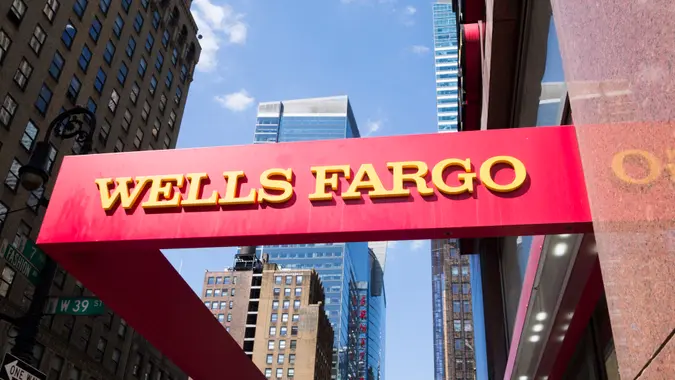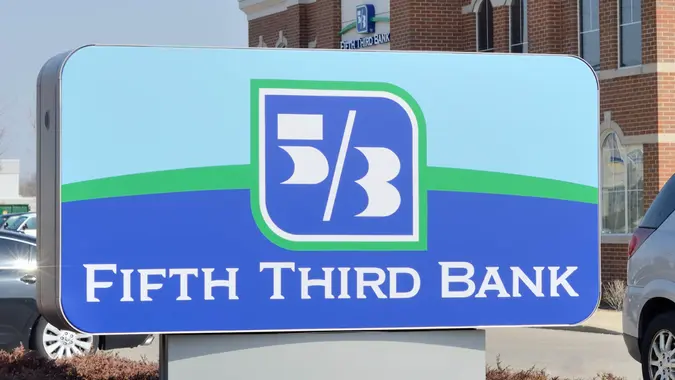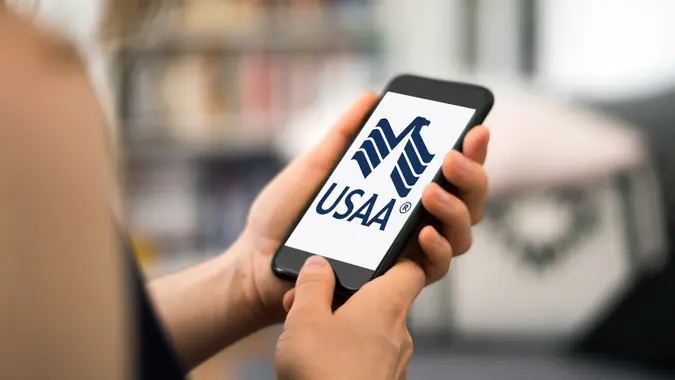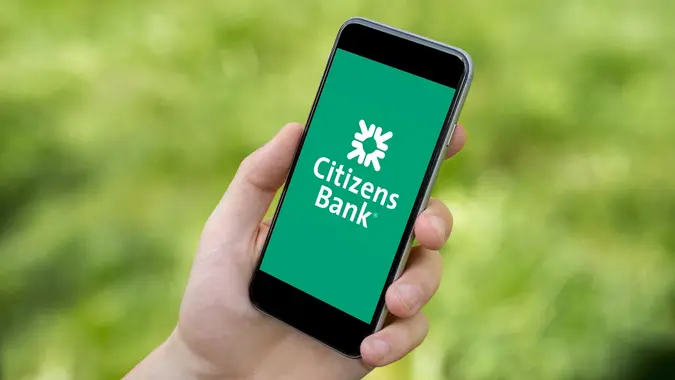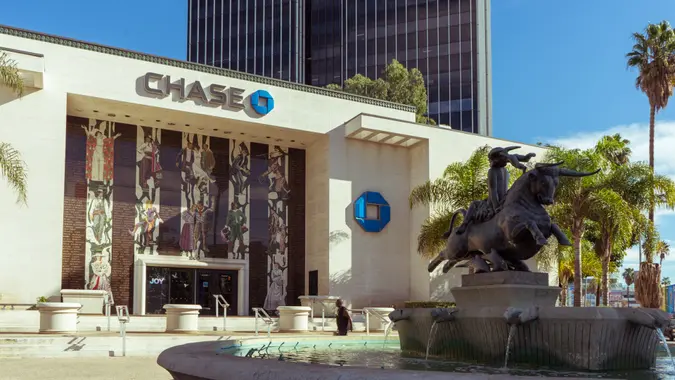What Is a Money Market Account?

Commitment to Our Readers
GOBankingRates' editorial team is committed to bringing you unbiased reviews and information. We use data-driven methodologies to evaluate financial products and services - our reviews and ratings are not influenced by advertisers. You can read more about our editorial guidelines and our products and services review methodology.

20 Years
Helping You Live Richer

Reviewed
by Experts

Trusted by
Millions of Readers
A money market account blends the benefits of a savings account with the accessibility of a checking account. Like a savings account, money market accounts pay interest on the balance you deposit. They also typically come with checks and debit cards for easy access to your money, like checking accounts.
Unlike traditional savings accounts, money market accounts may offer higher interest rates, especially for larger balances. However, they typically limit you to six fee-free withdrawals per month, in line with federal regulation guidelines.
How Do Money Market Accounts Work?
Money market accounts work similarly to other bank accounts. You deposit your money into the account and the bank pays you an agreed-upon interest rate as a return on your investment. The individual bank decides the interest rate.
In some cases, the bank may require you to meet minimum balance and minimum deposit requirements. Most traditional savings accounts don’t have minimum balance requirements.
Good To Know
Consider building your emergency savings in a traditional savings or money market account. Once your savings reach a comfortable limit, start earning higher interest by investing your excess in CDs and other high-yield options.
Are Money Market Accounts FDIC Insured?
If the money market account is offered by a bank that is FDIC insured, your funds will be protected up to the federal limit of $250,000 per depositor. Always confirm the bank’s FDIC membership before opening an account.
It’s important to note that money market accounts differ from money market funds, which are investment products and are not FDIC insured.
Benefits of Money Market Accounts
Below are some of the benefits of money market accounts:
- May offer higher interest rates, especially for higher balances
- Easy access to the funds
- FDIC insurance
Risks of Money Market Accounts
Below are some risks to keep in mind before signing up for a money market account:
- Minimum deposit requirements
- Transaction limits
- The interest rate is not fixed, so it could fall
Money Market Account vs. Other Savings Options
Money market accounts are not the only way to grow your money. Here are some other types of savings accounts:
- High-yield savings accounts: These savings accounts may offer a higher interest rate but they often lack check-writing privileges or debit cards.
- Certificates of deposit: CDs provide fixed interest rates but funds are locked in until maturity. Money market accounts offer more liquidity.
- Roth IRAs: This is a tax-advantaged investment account that can help you save. However, there are many laws around contributions and withdrawals.
How To Open a Money Market Account
You can follow these steps to open a money market account:
- Research options: Compare banks and credit unions to find the best interest rates, account features and fee structures.
- Check requirements: Make sure you can easily meet any deposit or balance requirements.
- Gather documents: Have your ID, Social Security number and proof of address ready.
- Apply: Submit your application online or at a branch. You should know relatively quickly if your application was approved.
Who Should Open a Money Market Account?
A money market account is usually best for savers who are growing their funds and don’t want to give up easy access. Savers can tuck funds into this account and access the money at any time. If you are still building an emergency fund but want your money to work for you along the way, a money market account might be the perfect fit.
Money markets work well to help you achieve other short-term savings goals, such saving for a wedding, vacation, home renovations or a car down payment.
Read our list of the best money market accounts in 2025.
Money Market Account FAQ
Here are the answers to some of the most frequently asked questions about money market accounts.- How do money market accounts differ from money market funds?
- Money market accounts are savings products with FDIC insurance, while money market funds are investment products that are not insured.
- Can you write checks from a money market account?
- Yes, many money market accounts allow check-writing, but the number of transactions per month may have a limit.
- What is the typical minimum balance for a money market account?
- Minimum balances vary by institution but many accounts require $500 to $5,000 to avoid fees.
- Is a money market account better than a high-yield savings account?
- Picking between a high-yield savings account and a money market account will depend on your needs. Money market accounts offer better accessibility with check-writing and debit cards. High-yield savings accounts often provide higher interest rates.
Sarah Sharkey and Elizabeth Constantineau contributed to the reporting for this article.
Our in-house research team and on-site financial experts work together to create content that’s accurate, impartial, and up to date. We fact-check every single statistic, quote and fact using trusted primary resources to make sure the information we provide is correct. You can learn more about GOBankingRates’ processes and standards in our editorial policy.
- FIDC. "National Rates and Rate Caps."
- Consumer Financial Protection Bureau. 2023. "What is a money market account?"
 Written by
Written by  Edited by
Edited by 




